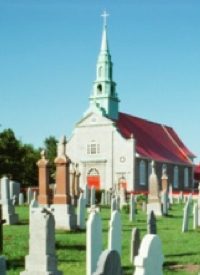
The 1990s and early 2000s were the years of the “mega-church” movement in the United States, with scores of congregations in larger cities growing quickly, prompting their boards to spend freely and build ambitiously, only to find their numbers thinning and giving down as the economy tumbled. “Since 2008, nearly 200 religious facilities have been foreclosed on by banks, up from eight during the previous two years and virtually none in the decade before that,” wrote the Wall Street Journal’s Shelly Banjo. She noted that financial experts “say hundreds of additional churches face financial struggles so severe they could face foreclosure or bankruptcy in the near future.”
Perhaps the “poster child” of churches in financial duress is the Crystal Cathedral in Garden Grove, California, which finds itself going through a high-profile and ugly bankruptcy as over 550 creditors from its years of extravagant holiday productions and television broadcasts try to collect from a church whose revenue from giving has plummeted 24 percent — but whose debt has skyrocketed to an estimated $100 million, according to Christianity Today.
The church that Robert Schuller built is merely one in an increasing number of religious worship centers that are facing some sobering realities. In fact, an estimated 100 congregations have filed for bankruptcy in the past year, an unprecedented number in a society where churches have often struggled, but rarely failed. “Churches are going through a very difficult time, but to actually file for bankruptcy is extremely unusual,” said Simeon May of the National Association of Church Business Administration.
But what the Wall Street Journal and other publications try to paint as a bleak picture of churches in financial quandary, Scott Rolfs, an investment banker who specializes in religious and educational institutions, said is really not that widespread a problem.
“There was a great deal of credit that was extended out in society between about 2004 to 2008,” Rolfs was quoted by OneNewNow.com quoted Rolfs saying, “and the credit actually was almost unprecedented to the bubble of credit that was created. With that much in the way of credit out there, there were bound to be some issues of borrowers having a hard time paying it back — especially when the economy really came to a screeching halt there in the fall of 2008.”
While Banjo quotes civil rights doomsayer Jesse Jackson Sr. as warning that churches “are the next wave in this economic crisis, Rolf points out that there are more than 300,000 churches in the United States, and most of them are still paying their bills and not in over their heads. “What we’re talking about is still a very, very small … segment of the church market,” he said, adding, “For 99 percent of the church-going public in America, their church is coming through the recession just fine.”



